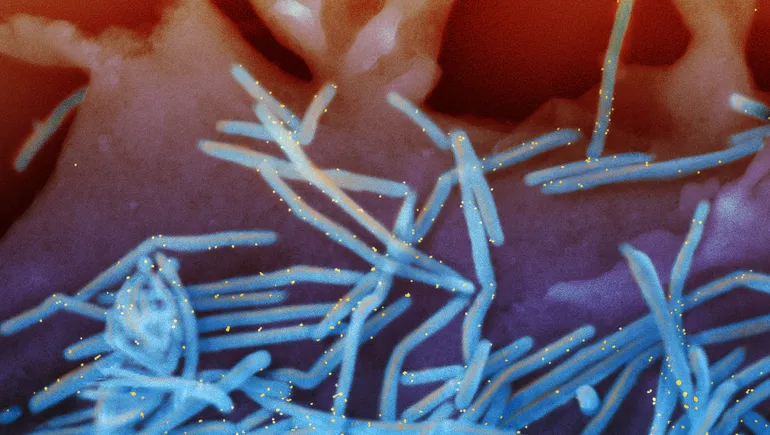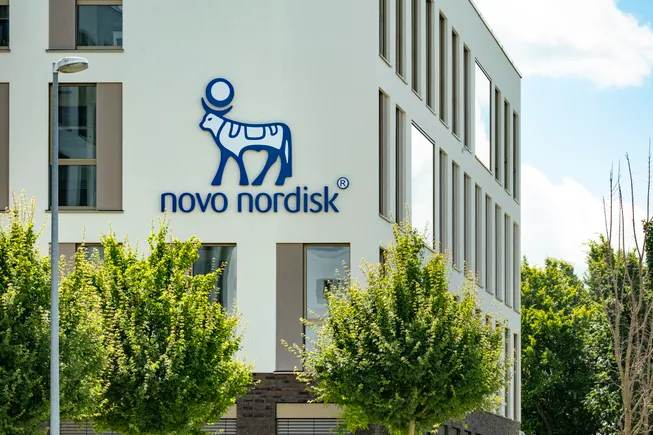New RSV vaccines can be powerful tools, but rollout poses test

New vaccines for respiratory syncytial virus offer a significant opportunity this fall for protection against a pervasive public health threat.
Their arrival in the U.S., alongside a new antibody drug, gives public health officials and physicians powerful new tools to combat respiratory syncytial virus, or RSV, which causes thousands of deaths among young children and older adults each year.
But they also bring the challenge of communicating to a public weary from three years of COVID-19 vaccination schedules and controversy.
“In general, people aren’t as aware of RSV, so that makes creating awareness of the vaccines even more challenging,” said Nick Stucky, vice president of research at Truveta and a practicing infectious diseases physician at Providence Portland Medical Center. “Because severe RSV disease is concentrated in vulnerable populations, it often isn’t something that is experienced or known by the general public.”
The rollout of RSV shots will overlap with the launch of revamped COVID boosters and the annual push for flu vaccines, meaning portions of the adult public will be asked to line up for three different respiratory inoculations this fall.
Health officials, physicians and drugmakers have been preparing for how to make that case. The Centers for Disease Control and Prevention is working with the Food and Drug Administration, while drugmakers are pitching their shots directly to the public.
“It’s a very welcome advance to have not one but several prophylactic interventions for RSV,” said Dan Barouch, an immunologist and professor of medicine at Harvard Medical School.
A medical advance
For decades, RSV defeated scientists’ best efforts to outfox it. But step-by-step research progress eventually led to a breakthrough insight that gave researchers a blueprint for designing safe and effective vaccines.
The RSV shots approved by the Food and Drug Administration earlier this year draw on that insight, targeting the “prefusion” F protein to stir up the immune system. GSK’s Arexvy won FDA clearance in May — a first — followed not long after by a similar OK for Pfizer’s Abrysvo, both for use in older adults. (Pfizer’s shot was more recently granted approval in pregnant women to protect newborns.)
Both shots proved protective during testing in clinical trials involving tens of thousands of older adults. Results showed each vaccine was highly effective in preventing severe disease, although the drugmakers used slightly different criteria.
In maternal use, Pfizer’s shot protected newborns from medically attended severe RSV-associated lower respiratory tract illness within three and six months of birth.
“To have the ability to reduce the risk of severe disease from RSV can make a major impact on a very, very common virus that does place burdens on hospitals and leads to what will become now preventable deaths,” said Amesh Adalja, a senior scholar at the Johns Hopkins Center for Health Security and an infectious disease physician.
The vaccines are joined on the market by a monoclonal antibody developed by partners AstraZeneca and Sanofi. Called Beyfortus, the preventive drug won FDA approval in July. Unlike the vaccines, which in older adults are meant to produce active immunity, Beyfortus provides a temporary shield of synthetic antibodies.
In testing, the drug reduced medically attended lower respiratory tract disease in newborns and helped prevent hospitalization in infants under one year old.
CDC advisers in June endorsed use of Arexvy and Abrysvo in adults over 60, but stopped short of giving their broadest recommendation. Instead, they advised what’s known as “shared clinical decision-making,” which encourages people to talk to their doctor about their individual circumstances.
They also backed Beyfortus in newborns up to 19 months of age, but have yet to provide a recommendation for Pfizer’s shot in mothers.
‘Uncharted territory’
RSV is a pervasive pathogen, infecting most children and commonly circulating among adults as well. Typically, it causes flu-like symptoms. But it poses a more serious threat to specific groups, especially the very young and the old.
Older individuals are more prone to severe disease and more likely to end up hospitalized for RSV. People with underlying conditions, such as asthma, chronic obstructive pulmonary disease or heart failure, are particularly vulnerable. In infants, the disease can lead to complications like bronchiolitis or pneumonia that require hospitalization.
The medical community has long been alert to RSV’s threat. But last winter, the virus became front page news as a “tripledemic” saw simultaneous spread of the flu, COVID and RSV.
An “unusually early” surge in RSV cases overlapped with peaking COVID and flu case counts. While some states weren’t hit as hard, hospitals in other areas ran out of hospital beds and others were forced to transfer patients with COVID out of state.
COVID has added new unpredictability to seasonal respiratory infection patterns. As a result, health organizations are encouraging eligible people most at risk to get vaccinated for all three viruses to prevent a repeat of last winter.
“We are preparing for the worst while we’re hoping for the best,” said Marcus Plescia, chief medical officer of the Association of State and Territorial Health Officials, at a meeting held by the group last month. “We’re in uncharted territory. We don’t really know what this season is going to look like and it’s going to look different in different areas of the country.”
Getting the message out
Pfizer and GSK have already begun rolling out their shots, and the marketing campaigns to go with them.
Beginning this spring, GSK has run ads featuring former professional basketball player Earvin “Magic” Johnson to raise RSV awareness. Pfizer, in its own campaign, warns older adults that RSV is “not just a cold.” Meanwhile, Sanofi has taken to social media to explain the risks of RSV to infants.
Public health officials are trying to raise the shots’ profile, too. The CDC has partnered with the FDA on awareness campaigns for RSV, COVID and influenza, Dave Daigle, the CDC’s associate director for the communications center for global health, wrote in an email. Local governments and organizations are starting their own education campaigns.
Pfizer’s and GSK’s shots are approved for people 60 years and older. But public health experts are focusing their messaging to individuals with medical conditions that put them at risk.
“We’ve had poor defenses against [the virus] up until now, when we have good protections for, again, people that are most at risk for this virus,” said Joseph Kanter, the top medical official for Louisiana’s health department, at the ASTHO meeting.
Yet health officials are concerned that people in at-risk groups may balk at getting three separate vaccines around the same time, particularly amid vaccine fatigue from the pandemic.
“One of the comments that we have begun to hear is that ‘this is a lot,’ and I understand that,” Kanter said.
Both GSK and Pfizer studied co-administration of their shots together with influenza vaccines, with each showing that giving the two together resulted in similar rates of side effects. Data also showed co-administration to be “non-inferior” to giving the two apart.
Where people go to get their vaccines could impact uptake, too. Some might choose their doctor’s office or go to a local pharmacy, potentially affecting the information they receive.
Both CVS and Walgreens said the two vaccines are now available at most of their pharmacy locations, via scheduled and walk-in appointments. A prescription is required for the vaccine in four states, according to spokespeople for the pharmacy chains.
The CDC’s shared decision-making recommendation, meanwhile, could mean some opt out altogether.
While uptake is uncertain, past vaccination rates for COVID boosters give some sense of a ballpark estimate. As of May, about 43% of adults aged 65 and older had received the bivalent COVID booster that was rolled out last fall.
“I think in the high-risk populations, we’ll probably see very brisk uptake,” Adalja said. “But I think in general, a 60-year-old person, that really doesn’t really have any medical problems, you might see lower uptake.”

Vials of GSK’s Arexvy
Permission granted by GSK
Protecting newborns
The expanded approval of Pfizer’s shot as a maternal immunization means expecting parents have two options to protect newborns.
Cleared for mothers between 32 and 36 weeks of gestation, Abrysvo is meant to, for a time, create passive immunity from RSV in young infants. The FDA limited the window in which the shot is administered due to concerns of a possibly higher risk for preterm birth.
CDC advisers are set to meet Sept. 22 to develop recommendations for maternal immunization. Their advice could affect how widely Abrysvo is used this way.
The CDC has already endorsed Beyfortus for infants younger than 8 months born during or entering their first RSV season. The shot is also recommended in children between 8 and 19 months who are at high risk of severe disease during their second RSV season.
It’s not yet clear whether Beyfortus can be used following maternal immunization with Abrysvo to improve an infant’s protection from RSV.
Navigating insurance
The RSV vaccines and Beyfortus aren’t cheap, and how they’re paid for and covered could affect their uptake.
GSK set the wholesale cost for a single dose of Arexvy at $280, while Pfizer will charge $295 per Abrysvo dose. Beyfortus has a higher price tag — either $495 or $990 depending on the dosage.
The CDC recommendations mean the vaccines should be covered, without a copay, for people with private insurance. However, some people on Medicare have been asked to pay hundreds of dollars out of pocket based on whether they have Part D coverage or not, according to an August report by The New York Times.
According to Pfizer, insurance coverage is available for RSV vaccination.
For Beyfortus, the CDC advisers voted to include the shot in the Vaccines for Children program, which will expand access to children who might not have coverage otherwise. Insurance plans must also cover the antibody shot in accordance with the Affordable Care Act, per Sanofi.
Both drugmakers expect their shots to become lucrative products. GSK anticipates sales of Arexvy will have a “steady build” over time, projecting sales to eventually top around 3 billion pounds, or about $3.7 billion, per year. Last December, Pfizer predicted U.S. revenue from Abrysvo will reach over $2 billion.
Meeting people where they are
Rollout of the RSV shots has just begun, but public health messaging is already in full swing.
Kanter, from Louisiana’s health agency, said they have doubled their communication efforts, and are leaning on churches and community centers to encourage immunization.
“One of the other lessons that we learned from COVID is that you can’t wait for people to come to you,” Kanter said. “You have to really make an effort to go meet them where they’re at.”
Drive-thrus and other similar vaccine events — widely used in the early days of the pandemic — could be another tool, members of ASTHO said at the August meeting. But the main focus for now will be on doctor education and awareness.
“My sense is that vaccine hesitancy will be a challenge to the uptake of the vaccine,” said Stucky, the Providence physician. “This is a complicated issue, and to address hesitancy, we need to maintain open communication with our community about both safety and efficacy of the vaccine.”
This post has been syndicated from a third-party source. View the original article here.




